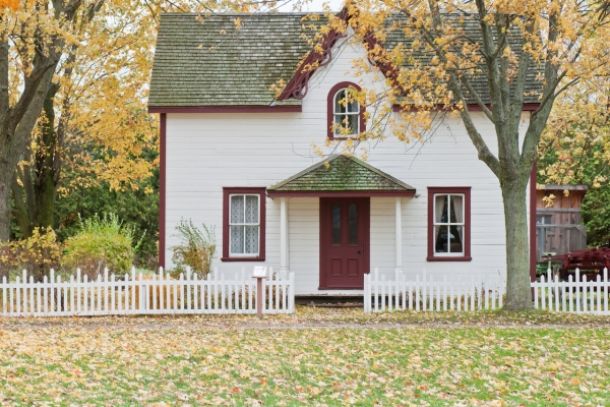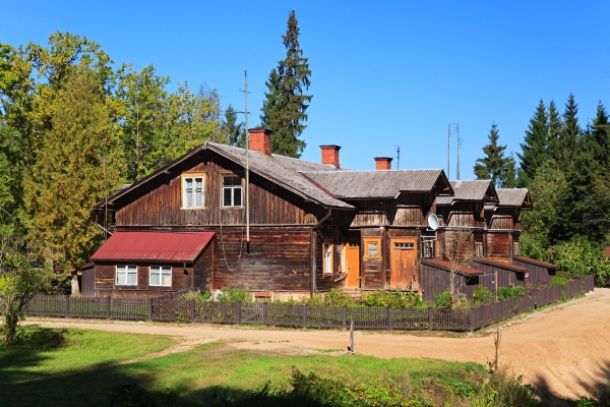The DIY Handbook for Wooden House Construction
The DIY Handbook for Wooden House Construction
Building your own wooden house can be a rewarding journey filled with creativity, learning, and the satisfaction of creating a home from the ground up. “The DIY Handbook for Wooden House Construction” is designed as a comprehensive guide that walks you through every stage of the process—from initial planning and design to construction techniques and long-term maintenance. This handbook compiles expert tips, proven methods, and practical advice to help you achieve a successful, durable wooden home.
Introduction
For many DIY enthusiasts, constructing a wooden house is not just about creating shelter—it’s about crafting a space that reflects personal style and sustainable values. Wooden houses offer natural beauty, energy efficiency, and a warm ambiance. However, the process involves detailed planning, careful material selection, and precision in construction. This handbook is intended to serve as your go-to resource, providing step-by-step instructions and insights that empower you to take on even the most challenging projects.
Planning and Preparation
Establishing Your Vision:
Begin by clearly defining your objectives. Consider factors such as the size of your home, number of rooms, architectural style, and any unique features you’d like to incorporate. Creating a vision board or a series of sketches can help solidify your ideas. This is your opportunity to imagine a space that balances aesthetics, functionality, and sustainability.
Developing Detailed Blueprints:
Transform your vision into detailed blueprints. Whether you draft these by hand or use digital design software, ensure that your plans include accurate dimensions, layout details, and structural elements. Precise blueprints serve as the roadmap for the entire project, helping you to coordinate tasks and minimize costly mistakes.
Budgeting and Scheduling:
A thorough budget is crucial to avoid surprises during construction. List all potential expenses—materials, tools, permits, and a contingency fund for unforeseen costs. Develop a realistic timeline with specific milestones for each phase of the build. Having a clear financial and time plan not only reduces stress but also helps keep the project on track.
Permits and Legal Considerations:
Before starting construction, consult local building codes and secure the necessary permits. Compliance with regulations is essential to avoid legal complications and ensure safety standards. Engaging with local authorities or experienced professionals can provide valuable guidance during this stage.
Material Selection and Sustainability
Choosing the Right Wood:
The success of your wooden house heavily relies on the quality of the wood. Popular options like cedar, pine, and oak offer durability and natural resistance to decay. Ensure that your wood is well-seasoned to minimize warping and shrinkage. Sustainable practices—such as sourcing reclaimed or certified sustainable wood—can further enhance the environmental benefits of your project.
Supplementary Materials:
In addition to wood, incorporate materials that boost structural integrity and energy efficiency. This may include concrete for a sturdy foundation, metal fasteners for added security, and high-performance insulation to regulate indoor temperature. Eco-friendly sealants and finishes also play a critical role in preserving the wood’s natural beauty and longevity.
Construction Techniques and Tools
Foundation and Framing:
Start with a solid foundation, selecting the type (concrete slab, pier and beam, or crawl space) that best suits your site conditions. A well-laid foundation ensures stability and protects the structure from moisture-related issues. Once the foundation is complete, move on to framing. Use treated lumber and employ traditional joinery techniques—such as mortise and tenon joints—combined with modern fasteners to create a robust skeleton.
Precision and Modern Tools:
Modern power tools and digital measuring devices have revolutionized the DIY process. Laser levels, digital calipers, and precision saws allow for accurate cuts and alignments, reducing errors that could compromise the integrity of your structure. Embrace these tools to save time and improve the overall quality of your build.
Insulation, Roofing, and Openings:
After framing, focus on insulation and roofing. Proper insulation in walls, roofs, and floors is vital for energy efficiency and comfort. Choose a roofing system that is appropriate for your climate—whether it’s wooden shingles, metal panels, or composite materials—and ensure that all openings for windows and doors are precisely measured and securely installed. Quality installation reduces energy loss and enhances the overall durability of the home.
Finishing and Interior Detailing
Exterior Finishing:
Apply high-quality sealants, stains, or eco-friendly paints to the exterior. These finishes protect against UV damage, moisture, and pests while showcasing the natural beauty of the wood. Regular upkeep of these finishes is crucial for long-term preservation.
Interior Customization:
The interior of your wooden house is where your personal style comes to life. Consider open floor plans that maximize natural light and incorporate custom-built furniture or cabinetry. Artistic details such as exposed beams, handcrafted trim work, and unique lighting fixtures add warmth and character. This personal touch transforms a structure into a welcoming home.
Maintenance and Long-Term Care
Routine Inspections and Upkeep:
Even after construction is complete, maintenance is key to ensuring longevity. Regular inspections help identify early signs of wear, moisture, or pest issues. Establish a seasonal maintenance schedule that includes tasks like cleaning gutters, resealing wood surfaces, and checking for structural integrity. Early detection and prompt repairs prevent small issues from escalating.
Continual Learning and Adaptation:
Every project offers an opportunity to learn and improve. Document your process, take notes on challenges and successes, and engage with DIY communities to share experiences. Continuous learning not only refines your skills but also inspires innovative approaches for future projects.
Conclusion
The DIY Handbook for Wooden House Construction is your comprehensive resource for transforming your dream of a wooden home into reality. With thorough planning, careful material selection, modern tools, and time-tested techniques, you can build a home that is both aesthetically pleasing and structurally sound. Embrace the process with confidence and creativity, and let your handcrafted wooden house become a testament to your skill and passion. Enjoy the journey of building your own home—a project that will provide personal satisfaction and serve as a lasting legacy for years to come.


